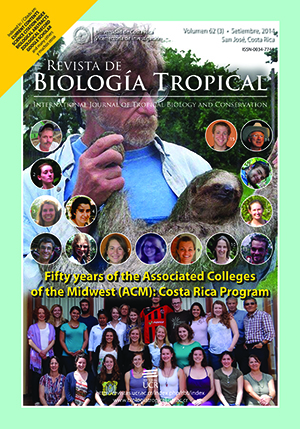Abstract
Most Andean mountain streams of the Orinoco Basin in Venezuela, had been suffering various disturbances. In spite of this, fish communities have been poorly evaluated in terms of spatial and temporal gradients. Thus, the generation of information about these communities is a priority, since it may support conservation of regional hydrobiological resources. For this, six sites were monthly evaluated in tributaries of upper Turbio River in Sierra de Portuguesa (770-1 305msnm), during the dry season and the beginning of the rainy season (January-April 2012); we characterized stream dimensions, substrate and water physicochemical variables. Electrofishing was used to determine the number and abundance of fish species. The fish communities and their stability were evaluated by exploring the changes in richness and abundance, coefficients of variation, hierarchical classification and non-metrical multidimensional scaling analysis. The sites conservation status was estimated with a habitat integrity index. Our results showed that richness of the 12 species found varied according to the mountain elevation, the tributaries and the conservation status of the sites. Chaetostoma dorsale, Creagrutus taphorni and Chaetostoma milesi comprised 90.8% of the relative abundance, and maintained the first ranks during the study period. The communities had little spatio-temporal variation which was associated with a gradient signed principally by the amount of shadow, rocks and gravel cover, water temperature and conductivity. Stability was moderate but varied with elevation and according to site conservation status. The tributaries in upper Turbio River were found to be under severe impacts and their fishes were found impoverished and at risk.Comments

This work is licensed under a Creative Commons Attribution 4.0 International License.
Copyright (c) 2014 Revista de Biología Tropical
Downloads
Download data is not yet available.






